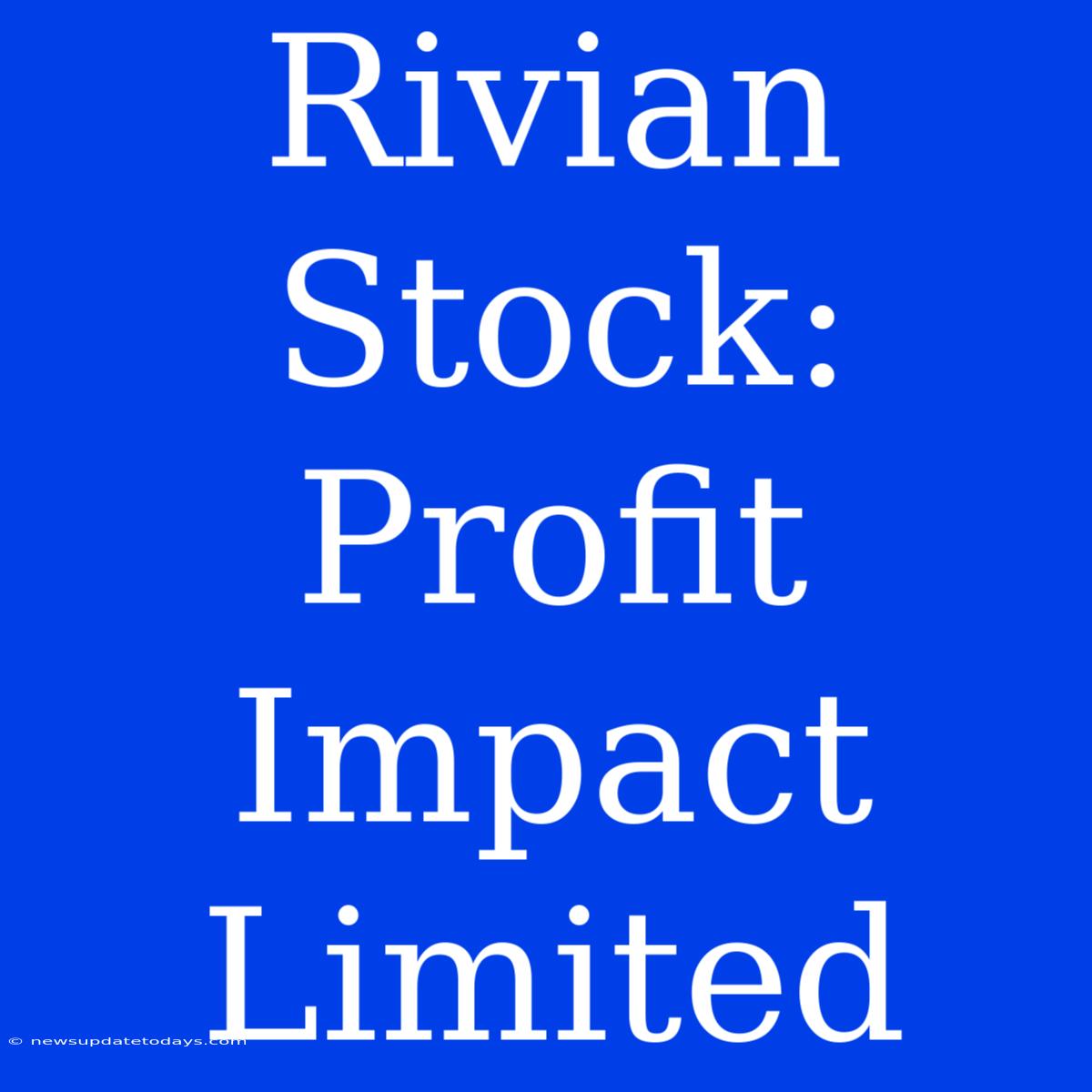Rivian Stock: Profit Impact Limited - A Deep Dive into the EV Maker's Challenges
Rivian Automotive (RIVN) has captured significant attention as a promising player in the electric vehicle (EV) market. However, its path to profitability remains a challenging one, and understanding the limitations impacting its profit margins is crucial for investors. This article delves into the key factors hindering Rivian's immediate profit potential.
High Production Costs and Scaling Hurdles
One major factor limiting Rivian's profitability is the high cost of producing its vehicles. The company is still in its early stages of scaling production, meaning it hasn't yet achieved the economies of scale enjoyed by larger, more established automakers. This translates to higher per-unit manufacturing costs, directly impacting profit margins. Overcoming this hurdle requires significant investment in automation, streamlined supply chains, and optimized manufacturing processes.
Supply Chain Disruptions and Inflationary Pressures
The global automotive industry faces ongoing supply chain challenges, and Rivian is no exception. Delays in receiving crucial components, coupled with inflationary pressures on raw materials and labor costs, significantly increase production costs and further squeeze profit margins. Navigating this turbulent environment necessitates strategic sourcing, diversification of suppliers, and efficient inventory management.
Intense Competition in a Crowded Market
Rivian operates in a rapidly expanding and increasingly competitive EV market. Established automakers are aggressively launching their own EV models, creating intense competition for market share. This competitive pressure limits Rivian's pricing power, making it harder to achieve high profit margins. Differentiation through innovative technology, superior customer experience, and targeted marketing are crucial to stand out in this competitive landscape.
Research and Development Expenses
Rivian invests heavily in research and development (R&D) to stay ahead of the curve in terms of technology and innovation. While crucial for long-term growth and competitiveness, these substantial R&D expenses negatively impact short-term profitability. Balancing R&D investment with the need for immediate profitability is a delicate tightrope walk for the company.
Limited Sales Volume and Market Penetration
Currently, Rivian's sales volume is relatively low compared to established automakers. Achieving significant market penetration and increasing sales volume is essential for achieving economies of scale and improving profitability. Expanding its sales channels, improving vehicle availability, and broadening its product portfolio are key strategies to increase sales volume.
The Outlook for Rivian Stock
While Rivian's path to profitability presents significant challenges, the company possesses considerable potential. Its innovative vehicles, strong brand recognition, and substantial investment from Amazon and Ford suggest a promising future. However, investors should realistically assess the hurdles ahead and understand that short-term profitability may remain elusive for the foreseeable future. Long-term investors with a tolerance for risk might see value in Rivian's potential, but it's crucial to monitor the company's progress in addressing the challenges discussed above.
Keywords: Rivian, RIVN, electric vehicle, EV, stock, profit, profitability, production costs, supply chain, competition, R&D, sales volume, market penetration, investment, challenges, limitations.

